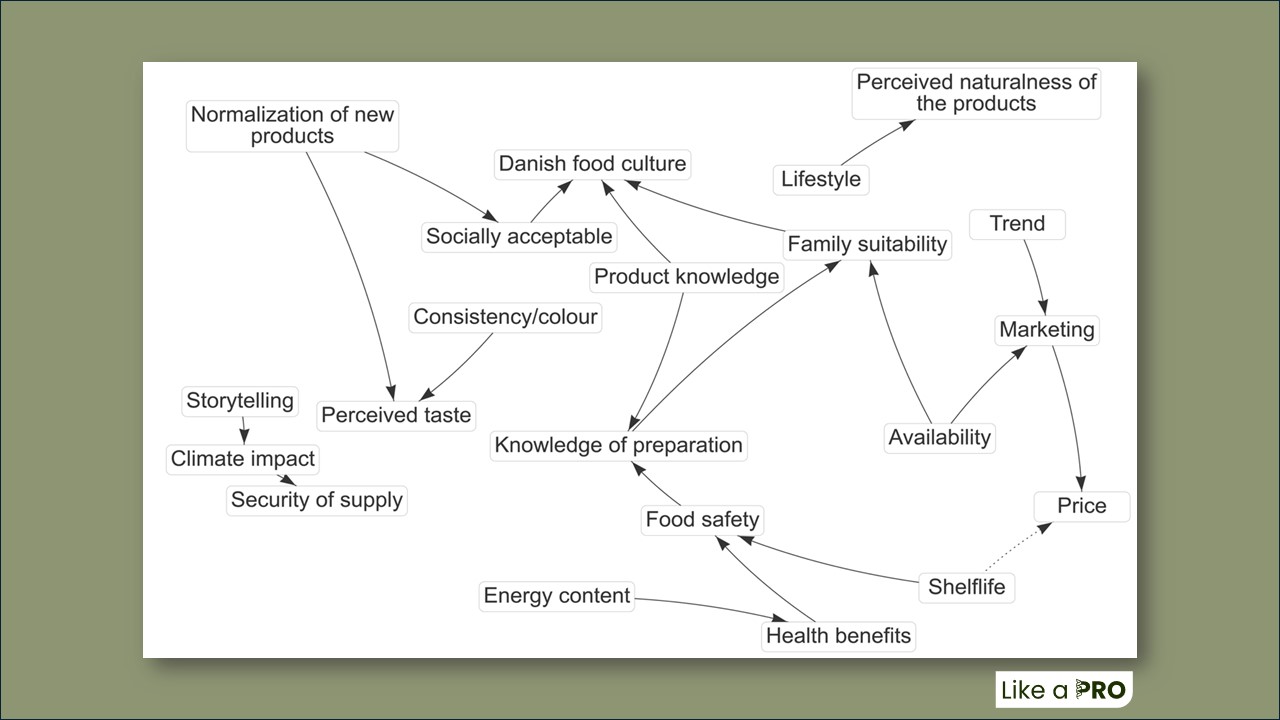
Stakeholders from 13 countries, invited by LIKE-A-PRO project partners, created seventeen detailed system maps to figure out what pieces can help shift things toward more sustainable and alternative protein foods (APF).
The maps were more like diagrams showing how individual-level factors, environmental issues, social dynamics, and economic factors all fit together in the context of APF adoption. Those determinants all work together in a whole system. We found “leverage points” in those maps, which are certain spots where a little nudge can make a big difference in the system. In the top you can see an example of a map, which was developed during a system mapping workshops in Denmark.
First of all, knowledge was an important determinant. Whether it’s knowing more about APFs or educating others about it, having access to information can be a game changer. Then there was social support, if people were encouraged to try APF and saw others do the same it made a real impact. Also, advertising, promotion, and actions of influencers played a role. These can impact people’s choices without them even realizing it.
Beyond that, other factors like legal regulations, perceptions of APF as healthy and ethical food, and even fear of trying new foods can play a role. And let’s not forget about economic factors like the costs of living in a certain country and the prices of APF were rated by stakeholders as super important.
In the end, there was one important conclusion: consumers are at the heart of the food system. If they are on board with APF, the whole system could shift towards a more sustainable future. So, whether it is through education, social support, or a little push from influencers, the journey toward a greener plate starts with every one of us.